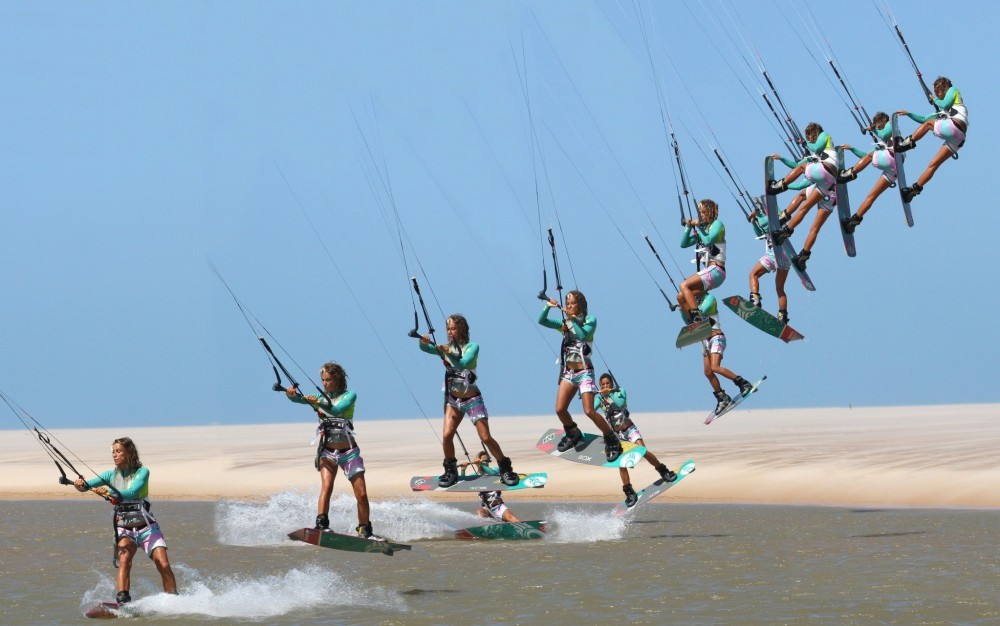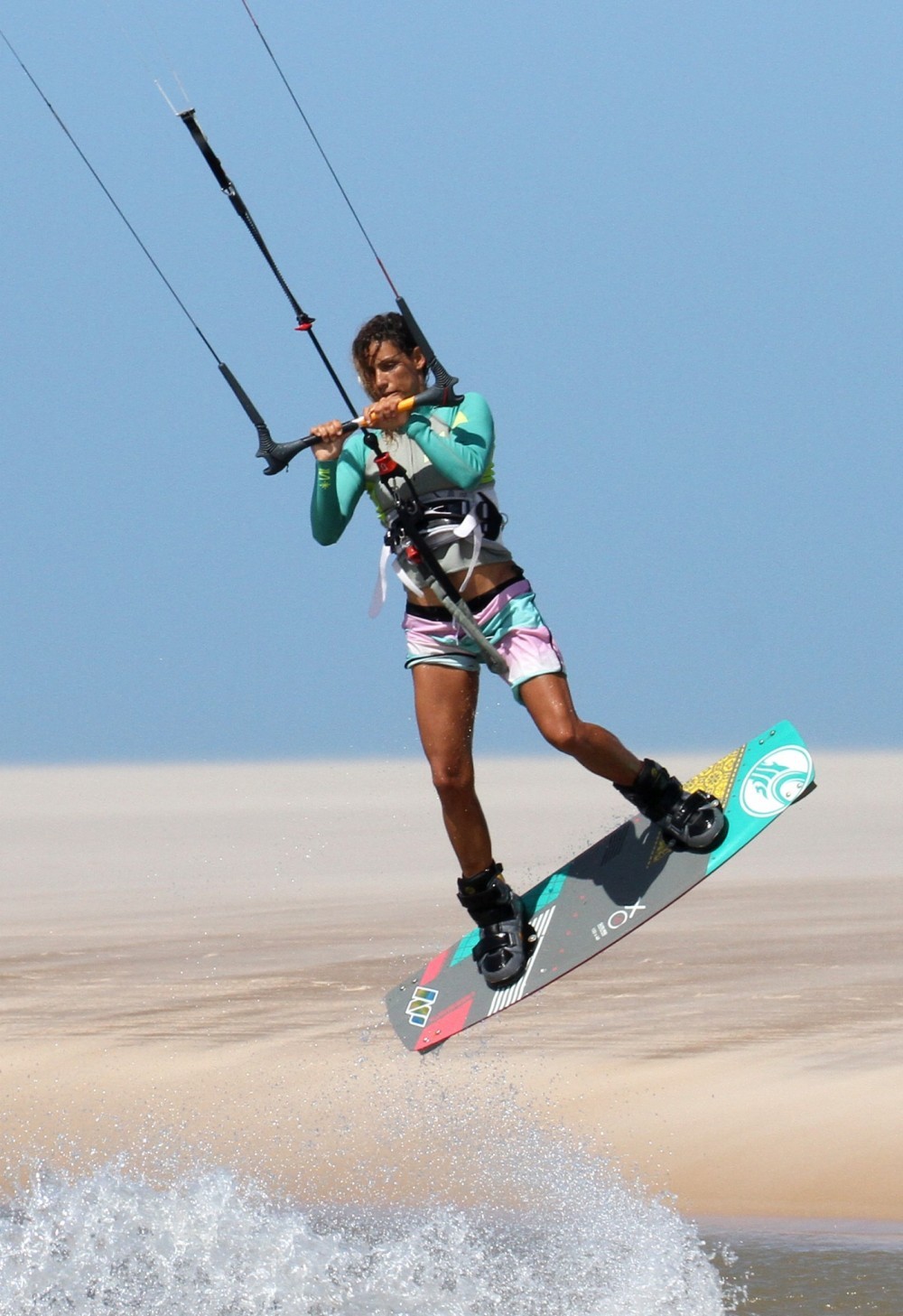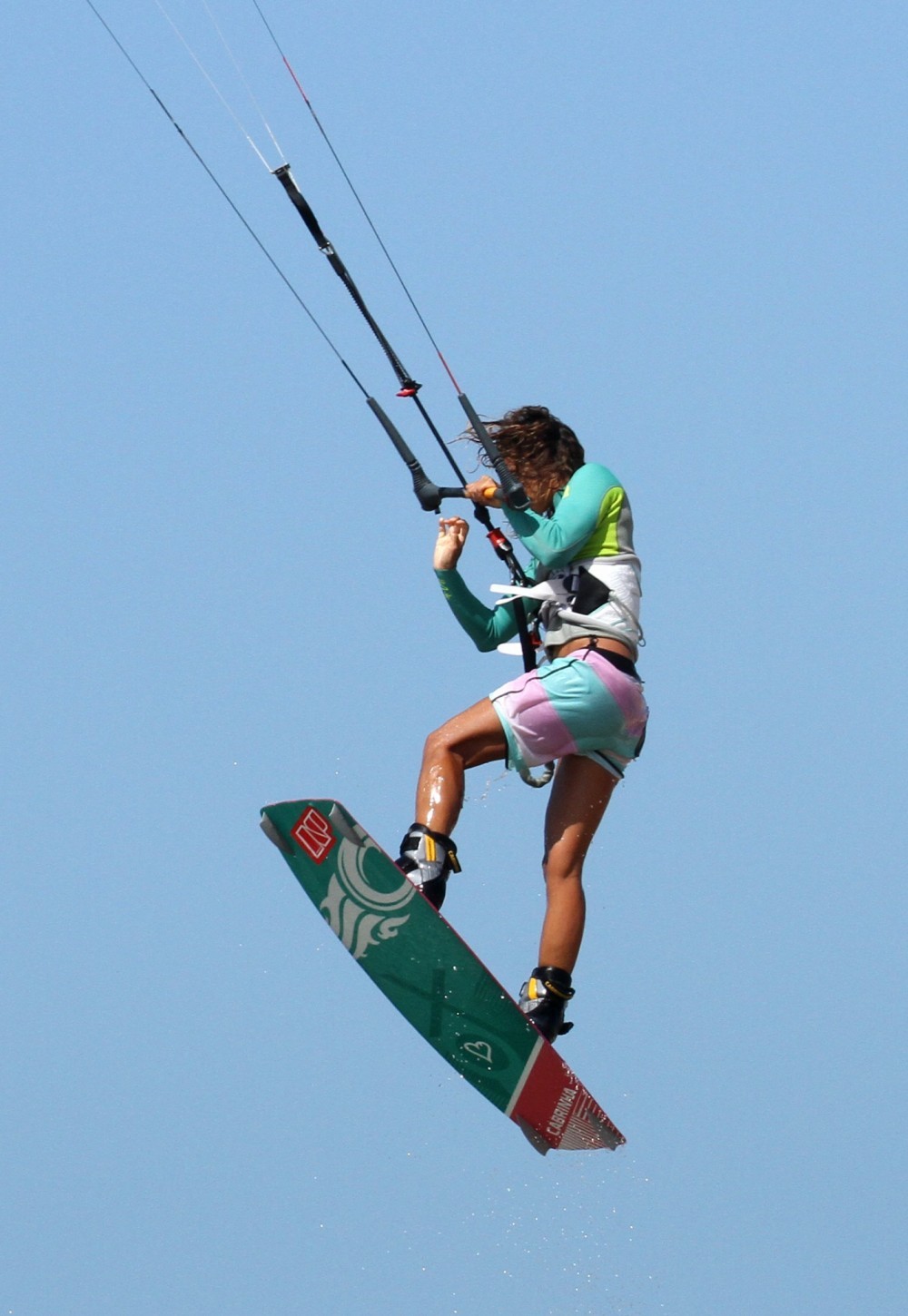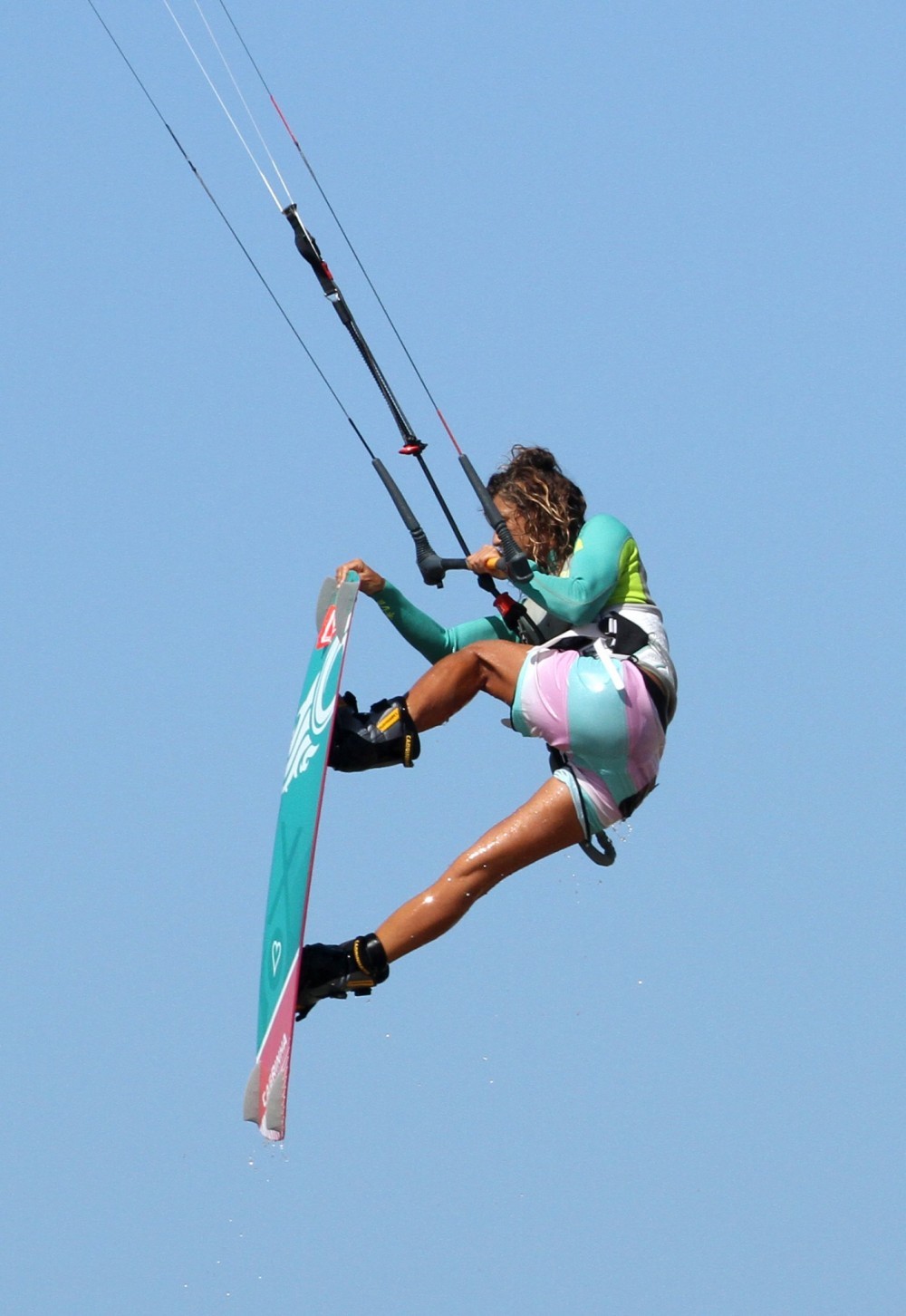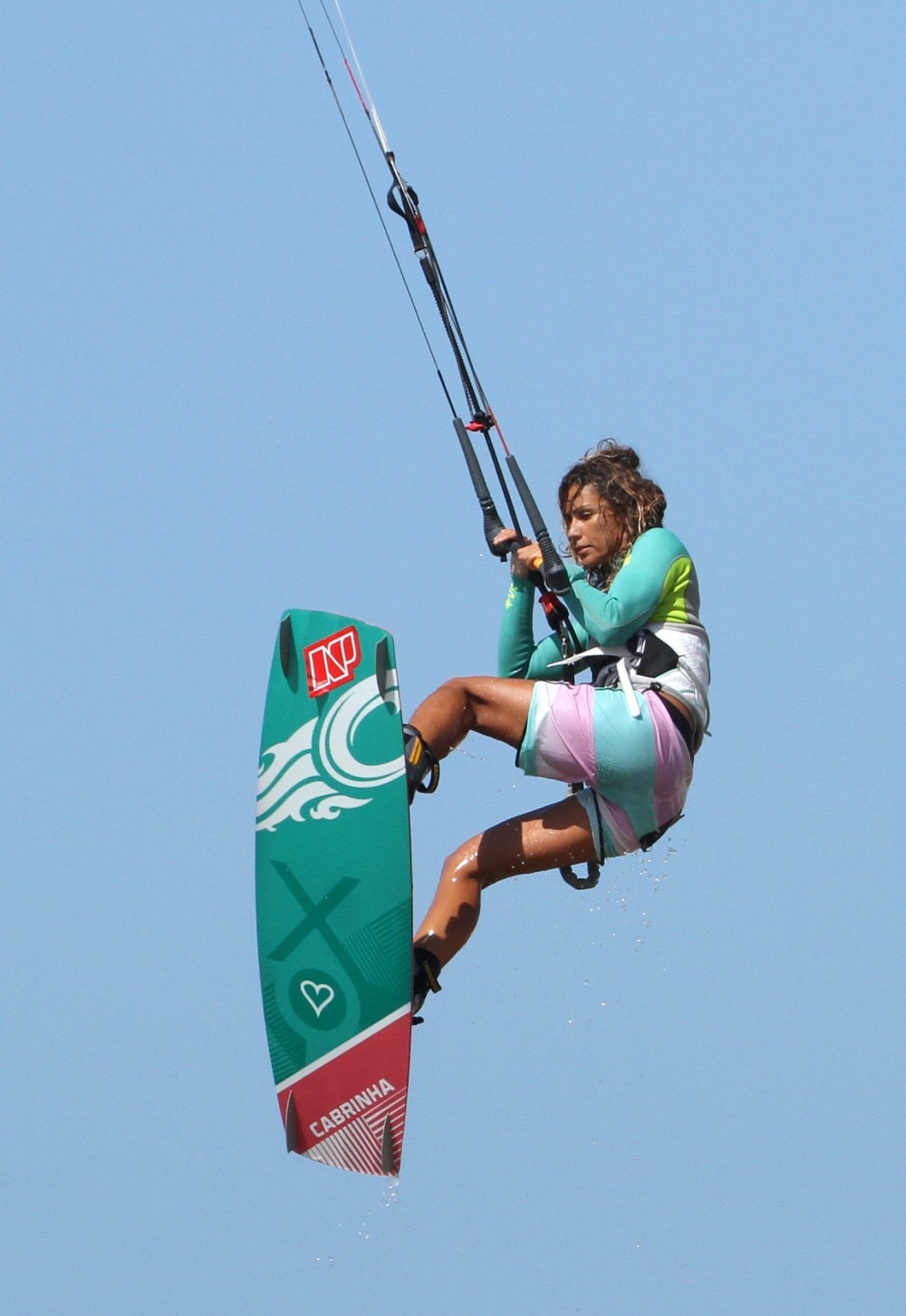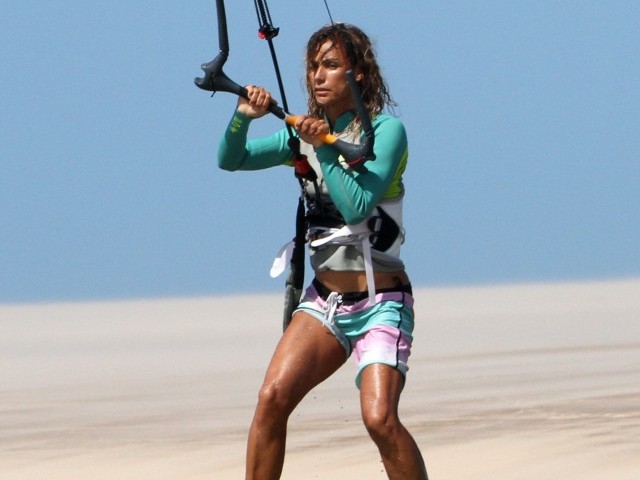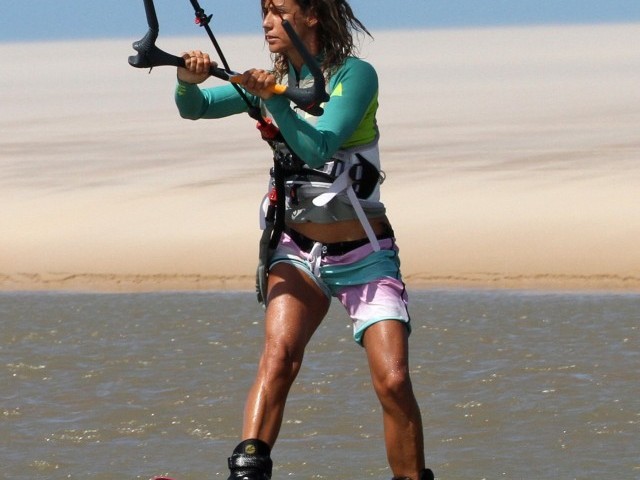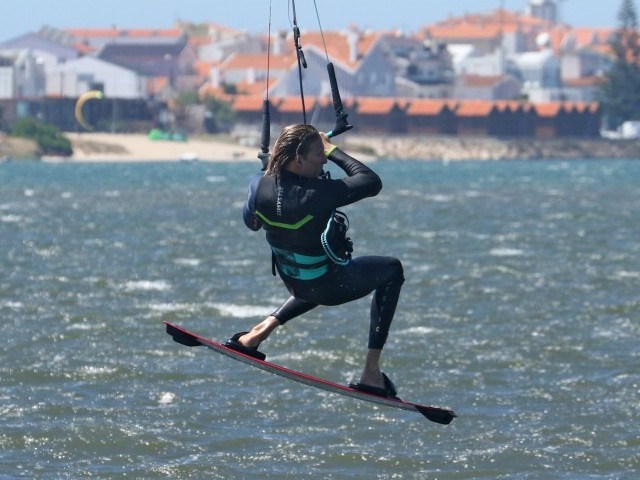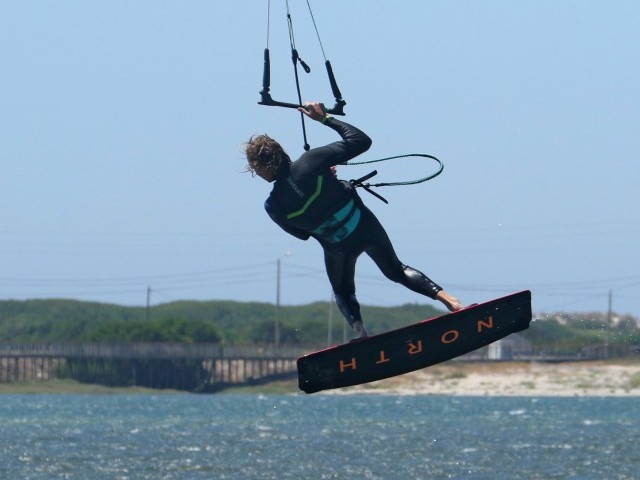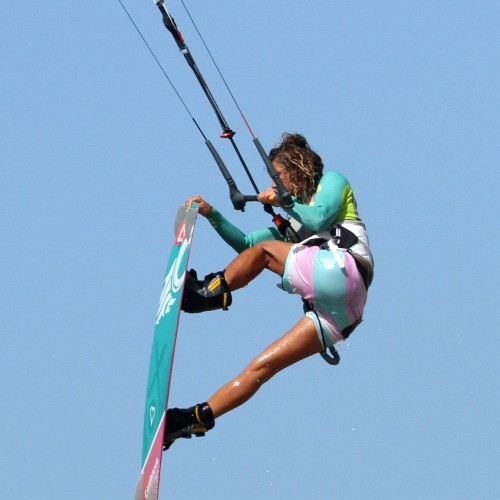
Nose Grab Down Loop Transition
Technique / Intermediate
Introduction
This one’s a veritable beauty! A well-executed, high, tweaked nose grab is a relatively simple move, yet one which deserves its place as an honorable don of style. Adding a down-loop and converting this into a transition is win-win all the way.
Although this is a transition, you’re best to think of it as a jump. You’re looking to get some height, and will therefore have speed and downwind drift once you’re in the air - hence the down loop to pull you out the other way. Other than holding the grab long enough to really make this count, your main concern is the kite. To make this smooth you need to control and adjust the kite throughout your airtime with only your front hand on the bar, so that the down loop is both progressive and well timed.
Before looking at this as a whole, let’s pick through some of the more important parts that will make this happen. We will however, assume that you can happily jump and you know the difference between a down-loop and a kite loop!
Take Off
As Karine is jumping on port tack, she approached with her kite between 10:30 and 11 o’clock, heading upwind on a solid edge, front leg extended, back leg bent but locked and she sent the kite hard, so that it will pull her up high and head back past 12 o’clock. As she’ll be grabbing, Karine has her hands centered on the bar.
As with any grab, the earlier that you can get it, the longer you can hold it. Getting the grab early means putting all the pieces in the right place, so that everything is lined up at the same time. As you’re going for the nose grab your first priority is to bring the nose of the board into position. Immediately after take off Karine is already bringing her front knee up and extending her back leg. As for the kite, Karine keeps the bar in and brings the kite forward so that it’s just behind 12 o’clock. In this position she’ll be balanced to free her back hand and keep the bar in, whilst going for the nose.
Balance and Go
As soon as you feel that the kite is correctly positioned, you’re floating without being pulled forwards, you can release your back hand and go for the grab. Karine has released her back hand and is focusing on the nose of the board - where she’ll grab it. As well as reaching across her body with her back arm, Karine also twists her front knee across under her harness to bring the nose as close to her as possible - all the while keeping the bar in, tension on the lines and therefore support from the kite.
The Grab
This is the‘piece de la resistance’ of the move, so make it count. Get a good grab on the nose of the board and pull it in towards you as you extend your back foot down and away from you, it’ll look great and feel wonderful. Posing aside this position with one hand pulling the grab whilst the other holds the bar in does give you a lot of balance in the air, and it prevents you from leaning all of your weight onto your front hand and inadvertently diving the kite down. Try and hold this position until you are well on your way down. If you release early you’ll dangle, loose balance and be forced to either dive early, or let the bar out and drop.
Karine will hold this position past the apex of her jump. However as she starts to descend Karine will pull gently on her front hand to slowly steer the kite over her head and across towards 11:30, so that the kite is just in front of her. This is important as if you want power from your down-loop to pull you out of the jump, you must loop the kite from in front of you. If you leave the kite back it won’t generate any power when you down-loop it and you’ll sink on landing.
Release and Prepare
The timing of this part will improve with practice, but suffice to say that as soon as you feel the kite pulling gently forwards, it’s time to get both hands back on the bar in preparation for the down-loop. If you wait you won’t be balanced and you will be forced into letting the bar out to control yourself. As Karine releases the grab she keeps her knees up in front of her. She doesn’t want her feet and board to be left behind when she pulls the trigger. There are a number of advantages to using two hands. First off you can make sure that the bar is on the sweet spot, so you won’t stall or depower the kite when you down-loop. You can pull and push, therefore guaranteeing a positive and quick reaction from the kite. And finally, with two hands on the bar you can easily bring your landing foot forward, as you have contact with the bar near what will be your new front hip. If you release your back hand, you’ll pull the bar in towards your front hip, which won’t help turn the board down wind to land.
The Down-Loop
With the kite now flying between 12:30 and 1 o’clock Karine give it the beans! Using both hands she initiates the down-loop, pulling hard on her front hand and pushing away with her back hand, all the while keeping the bar on the sweet spot. As the kite was already moving forward this movement is progressive, so you must be positive on the bar to make the kite move, especially as you will have your hands centered on the bar.
Touch Down
Assuming that you’ve down-looped the kite with enough zing, the kite should be on the way up and back towards the direction from whence you came, pulling you out into a perfect transition landing. Your aim is to land fairly downwind with a slight bias towards the new direction, with your weight slightly back over the tail of the board so that you’re ready to carve back onto your edge and follow the kite. If you land dead downwind your momentum will take you too far downwind and you will potentially out run your kite and get way too much slack in your lines. Karine is watching her kite so that she can stop steering the loop once the kite is back where she wants it - heading the other way. Her body is centered over the board so that she doesn’t bounce out on landing, but her hips are dropped back over the tail to assist with the carve back up, get tension on the lines job. Once you’ve landed make sure you’re balanced, have room, ride out and only then worry about untwisting your lines with a bar spin.
Top Tips
First off start with a few nose grabs, followed by some two handed down-loops to feel your way into the move in the given conditions that you have.
Ponder which size you’re on. If you are flying a 7m your timing will need to be spot on, if you’re on a 12m you may not complete the down loop before landing, but you’ll have time to think and even react. That is to say that on a 7m your kite will be behind you so you’ll need to get it forward before down-looping. On the 12m it will be less critical.
Make sure that you commit to the down-loop. Although down-loops are generally a lot softer than kite loops, because both you and the kite are flying in the same direction, there is nothing worse for you, or your kite, than pulling back once you’ve dived the kite - if you’ve started the loop, finish it…
Have a good look at the sequence and videos.
Common Problems
Not reaching the grab. Generally it’s nothing to do with flexibility, but you need to help yourself by reaching across and around with your arm, whilst bringing your knee up and across to the same place. The most common reason for missing the grab is not straightening the back leg down. If it’s bent the nose will be further away from you.
Landing with no power. As lauded to earlier, this is the most common problem with any down-loop transition and will be more noticeable the smaller the kite that you’re using. If you down-loop the kite from behind 12 o’clock the kite will just whip around behind you, and therefore it won’t physically pull you out of the move. Before cranking the kite around you have to get it across the window to either 1 or 11 depending on your direction of travel. Do this and then you can down-loop the kite through the window, generating power and pulling you out downwind.
Keystones
- Good send for height
- Front knee up early
- Back leg extended
- Steer kite forward over your head
- Progressive down-loop to pull you downwind for landing
This technique article was in Issue 50 of IKSURFMAG.
Related
By Christian and Karine
Christian and Karine have been working together as a coaching team, running improver to advanced kitesurfing clinics since 2003.






